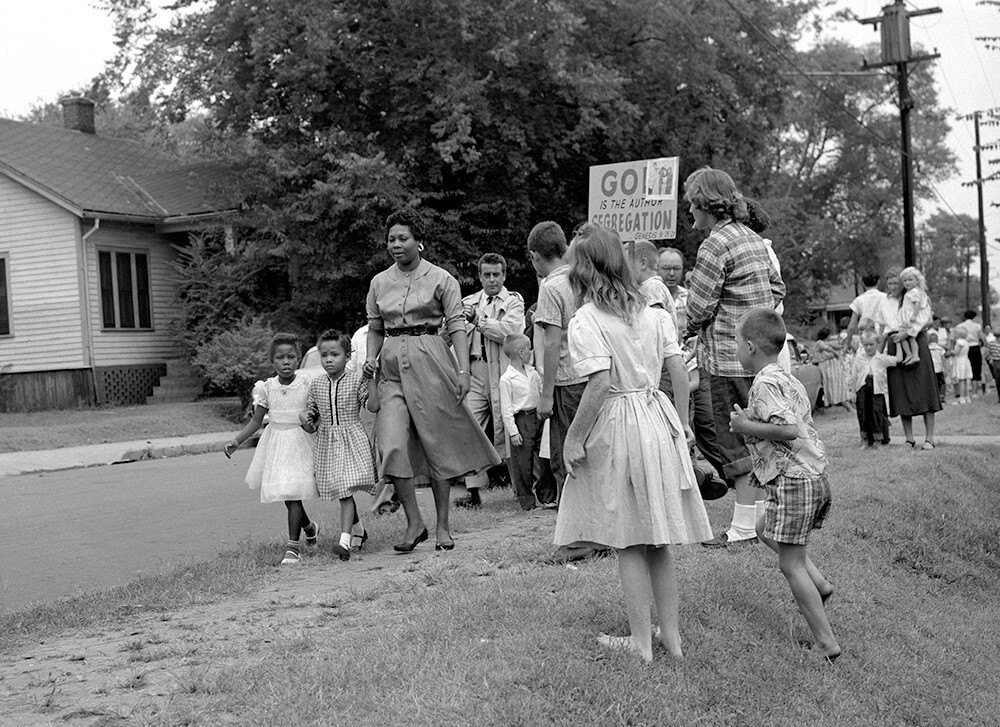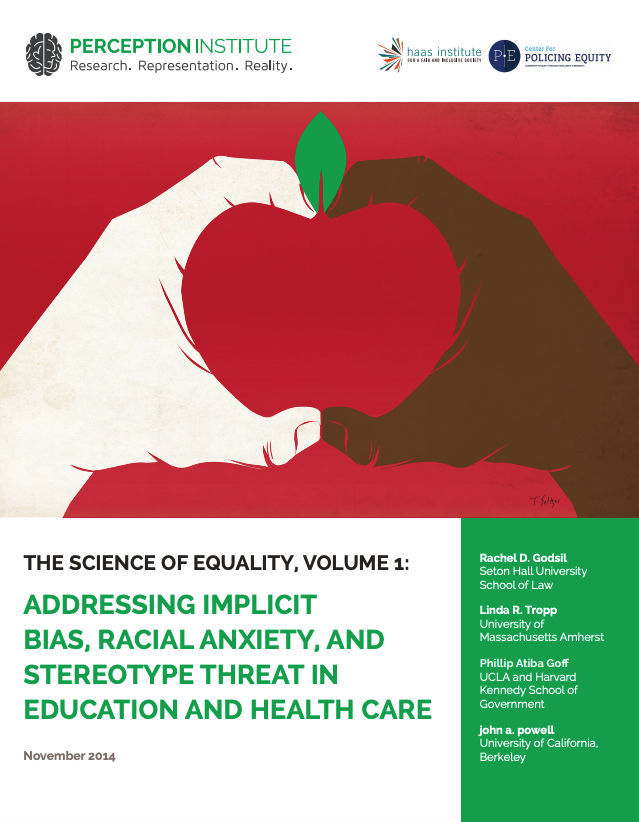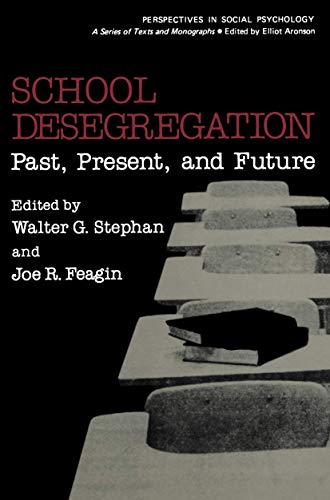End Of School Desegregation Order: A Turning Point?

Table of Contents
The History of School Desegregation Orders
The history of school desegregation in the United States is a long and complex one, deeply intertwined with the nation's history of racial injustice. Segregation in public schools was a cornerstone of Jim Crow laws, systematically denying Black children equal access to education. The landmark Supreme Court case Brown v. Board of Education (1954) declared state laws establishing separate public schools for Black and white students to be unconstitutional, overturning the "separate but equal" doctrine established in Plessy v. Ferguson.
However, the implementation of the Brown decision faced significant resistance across the country. Many states and school districts actively resisted desegregation, employing tactics such as "massive resistance" to thwart integration efforts. Federal courts played a crucial role in enforcing desegregation orders, issuing mandates that often required busing and other measures to achieve racial balance in schools.
- Brown v. Board of Education (1954): This landmark Supreme Court case declared state laws establishing separate public schools for black and white students unconstitutional.
- The Role of Federal Courts: Federal courts were instrumental in enforcing desegregation orders through various legal mechanisms and mandates.
- Resistance to Desegregation: Significant resistance to desegregation occurred in the South and other parts of the country, leading to protracted legal battles and social unrest.
- Evolving Legal Landscape: The legal landscape surrounding school desegregation continued to evolve over the decades, with ongoing challenges and court decisions shaping its trajectory.
Arguments for the End of School Desegregation Orders
Proponents of ending federally mandated school desegregation orders often argue that the orders have become ineffective and even counterproductive. They claim that the orders represent an overreach of federal power, infringing on the principle of local control over education.
- Overreach and Local Control: Critics argue that the orders undermine local autonomy and the ability of communities to tailor educational solutions to their specific needs.
- Outdated and Ineffective: Some suggest that the orders have outlived their usefulness, failing to address the root causes of educational inequality.
- Re-segregation through Housing: Concerns are raised that even with desegregation orders, residential segregation and other factors contribute to de facto segregation in schools.
- Economic Burden: Maintaining desegregation programs, particularly busing, can impose significant financial burdens on school districts.
Arguments Against the End of School Desegregation Orders
Opponents of ending the orders emphasize the persistent racial disparities in education and argue that continued efforts are crucial to achieve true equality. They point to the ongoing legacy of segregation and systemic racism as significant barriers to educational equity.
- Continued Racial Segregation: Statistics consistently reveal the continued presence of racial segregation in schools, even after decades of desegregation efforts.
- Impact on Academic Achievement: Research demonstrates the detrimental impact of school segregation on the academic achievement and opportunities of minority students.
- Systemic Racism: Opponents emphasize that systemic racism continues to play a role in perpetuating educational inequality, requiring ongoing intervention.
- Need for Monitoring and Intervention: They argue that ending desegregation orders prematurely would remove crucial monitoring and intervention mechanisms to ensure equitable access to education.
The Impact on Educational Equity and Diversity
The end of school desegregation orders has significant potential consequences for educational equity and diversity, both in the short-term and long-term. The potential for increased racial isolation in schools is a major concern.
- Increased Racial Isolation: Ending the orders may lead to a resurgence of racially homogenous schools, limiting opportunities for cross-racial interaction and understanding.
- Impact on School Quality: Predominantly minority schools may experience a decline in resources and educational quality without continued desegregation efforts.
- Social and Cognitive Development: School diversity is crucial for fostering social and cognitive development, promoting tolerance and understanding among students from diverse backgrounds.
- Intergroup Relations: The end of desegregation orders may negatively impact intergroup relations and social cohesion within communities.
The Future of School Integration and Desegregation Efforts
While the end of federally mandated desegregation orders represents a shift, the need for strategies to promote school integration and diversity remains. Alternative approaches are needed to address the underlying causes of school segregation.
- School Choice and Integration: Policies promoting school choice and integration, while carefully designed to avoid re-segregation, could play a role.
- Affirmative Action Policies: Affirmative action policies in education may need to be reconsidered and potentially strengthened to promote diversity.
- Addressing Housing Segregation: Addressing residential segregation, a significant driver of school segregation, is crucial for long-term progress.
- Equitable Funding: Ensuring equitable funding for schools in diverse communities is vital to create truly inclusive learning environments.
Conclusion
The end of federally mandated school desegregation orders is a complex issue with far-reaching implications. While proponents argue for local control and the perceived ineffectiveness of the orders, critics highlight the persistent racial disparities in education and the ongoing need for proactive strategies to promote school integration and equitable educational opportunities. The future of school diversity hinges on a nuanced understanding of these competing arguments and a commitment to addressing the root causes of educational inequality.
Call to Action: The debate surrounding the end of the school desegregation order is far from over. Continued engagement and advocacy are essential to ensure that all students, regardless of race or background, have access to a quality education. Let's continue the conversation about school desegregation and work towards creating truly equitable and inclusive learning environments for every child. We must actively fight for policies and practices that support school integration and dismantle the legacy of segregation in American education.

Featured Posts
-
 Improving Mental Health Care Addressing Systemic Issues
May 03, 2025
Improving Mental Health Care Addressing Systemic Issues
May 03, 2025 -
 Justice Departments Decision The Future Of School Desegregation
May 03, 2025
Justice Departments Decision The Future Of School Desegregation
May 03, 2025 -
 The Financial Viability Of Offshore Wind Farms Under Scrutiny
May 03, 2025
The Financial Viability Of Offshore Wind Farms Under Scrutiny
May 03, 2025 -
 Paired Singles Loyle Carners All I Need And In My Mind Released
May 03, 2025
Paired Singles Loyle Carners All I Need And In My Mind Released
May 03, 2025 -
 Beyond Bmw And Porsche A Wider Look At Foreign Automakers China Issues
May 03, 2025
Beyond Bmw And Porsche A Wider Look At Foreign Automakers China Issues
May 03, 2025
Latest Posts
-
 Finding Your Dream A Place In The Sun Top Tips For Overseas Property Buyers
May 03, 2025
Finding Your Dream A Place In The Sun Top Tips For Overseas Property Buyers
May 03, 2025 -
 Billetterie La Seine Musicale Concerts Danse Et Cinema 2025 2026
May 03, 2025
Billetterie La Seine Musicale Concerts Danse Et Cinema 2025 2026
May 03, 2025 -
 La Creme De La Crim L Heritage Joseph Sur Tf 1
May 03, 2025
La Creme De La Crim L Heritage Joseph Sur Tf 1
May 03, 2025 -
 La Seine Musicale Saison 2025 2026 Evenements A Venir
May 03, 2025
La Seine Musicale Saison 2025 2026 Evenements A Venir
May 03, 2025 -
 A Place In The Sun Your Guide To Finding The Perfect Property
May 03, 2025
A Place In The Sun Your Guide To Finding The Perfect Property
May 03, 2025
